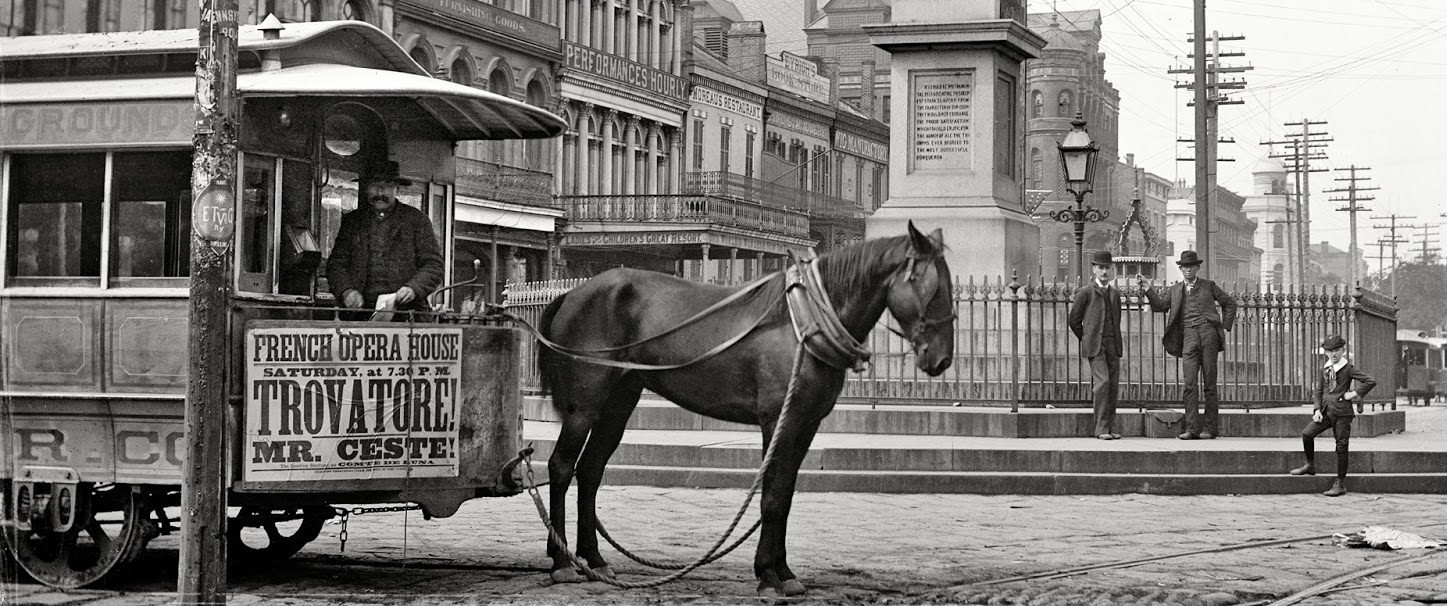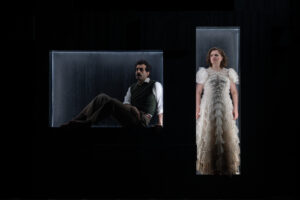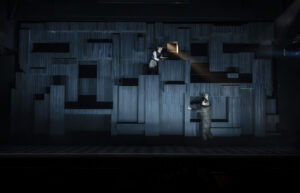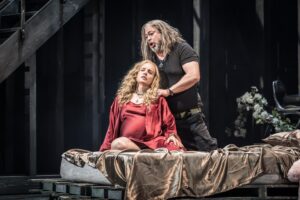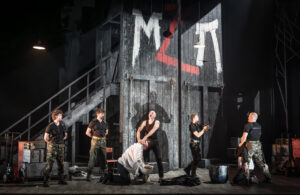During the summer holidays, when operatic life in Poland almost comes to a standstill, being limited to concert performances and one-off open-air performances, critics and music lovers are left with no choice but to pack up their suitcases and seek their fortunes elsewhere. Summer festivals in France, Germany, Austria and the United Kingdom not only take place in real theatres, but also tempt fans with interesting repertoire, presenting operas that are completely unknown in Poland or, for various reasons, are neglected. I began my holiday tour this year in England as usual. After Avner Dorman’s Wahnfried I returned to Longborough for Pelléas et Mélisande, which had its Polish premiere at Teatr Wielki-Polish National Opera (in a production that was, in fact, transferred from the Aix-en-Provence Festival), 116 years after the Paris premiere, and disappeared from the stage after five performances. From there I moved on to Grange Park Opera for a performance of Tchaikovsky’s Mazeppa, unlikely to be staged in Poland again.
Monty Jacobs, a now forgotten German critic of English descent, wrote in 1904 of Maeterlinck’s symbolist play that “Mélisande’s love tragedy sparkles with the fullness of saturated colours and delicate transitional tones of a picture that is utter perfection”. The same can be said today of Debussy’s masterpiece, one caveat being that the composer constructed his musical image from the delicate transitional tones between light and darkness. His Pelléas et Mélisande is the first opera in history with a libretto that is not an adaptation, but the text of a play, abridged with the playwright’s permission (with what is perhaps the only but memorable original addition by the composer – Mélisande’s song “Mes longs cheveux” at the beginning of Act Three). Fidelity to the prosody and complicated meanings of the original is one of the main factors that determine the atmosphere of the score, which, according to Ernest Ansermet, exemplifies a perfect symbiosis of musical content with poetic substance. At the same time Pelléas can be called an anti-opera, as it were, a work that eludes both the convention of the form and itself. It takes place always and everywhere or never and nowhere. It evokes an overwhelming aura of fear and mystery locked in unexpected dissonances, modalisms and whole-tone scales without a tonal centre. It undulates slowly and tails off like dead water after a storm. Anyone who tries to fathom its essence will hear “ne me touchez pas” – heard in nearly every bar, not just in the famous first words of the terrified Mélisande.
Pelléas et Mélisande at LFO. Karim Sulayman (Pelléas) and Kateryna Kasper (Mélisande). Photo: Matthew Williams-Ellis
That is why stage directors should not “touch” Pelléas et Mélisande. The land of Allemonde is governed by symbols and archetypes. Most attempts to set the work in a specific, recognisable reality fail. Fortunately, Jenny Ogilvie, the director of the Longborough production, respects the work’s programmatic anti-realism and has offered a production that is as ambiguous as it is engaging for the audience – clearly drawing on Adolphe Appia’s symbolist theatre, with clean, architectural space modified primarily by light and shadow. The stage is almost empty and from the very first images overwhelmingly dark. There is no spring, no castle or tower, no precipice flooded with water – or they are there, suggested, however, by silver foil, geometric, three-dimensional sets by Max Johns and by Peter Small’s varied lighting.
Neither is there Mélisande’s long hair, which somewhat perplexed me – until the beginning of Act Three, when the protagonist, instead of combing the locks tumbling down from the tower walls, rocked on a swing: in thick darkness illuminated by ethereal light, wearing a snow-white gown with vertical ruffles (costumes by Anisha Fields) sufficiently emphasising the “rusalka-like” aspect of her personality. This was enough to charm not only Pelléas, but the entire audience as well. And yet, despite the compelling beauty of this and other scenes, not all ideas of the lighting director proved equally convincing: at times Small used this tool too aggressively, overshadowing – excuse the pun – Ogilvie’s excellent work with the actor-singers. A significant error, but one that does not ruin the beauty and wisdom of the production, consistently carried through to the finale, in which Mélisande’s deathbed, resembling a flower-filled glass coffin, disappears into the darkness along with Arkel hugging the newborn baby, and the only character that remains on stage is Golaud, the most tragic figure of the drama, a man who has lost everything because of a desperate belief that the “truth” will guarantee him the love of the mysterious foundling from the forest.
A beautiful production, one of the most beautiful ones I have seen at this theatre: not least because it confirmed Ansermet’s opinion concerning the symbiosis of poetry and music in this work. Anthony Negus, whom I know best for his dazzling interpretations of Wagner’s oeuvre, has managed to finally shatter the myth of Pelléas as an anti-Wagnerian opera. In his work Debussy is involved in a fierce dispute with the Bayreuth Master, though he does not question his method – rather, he tries to direct it onto a different track, cleanse it of the remnants of the Romantic aesthetics and distil it into a form more suitable for the new times. He plays with silence, rarely goes beyond mezzo forte, avoids tutti like the plague, treats leitmotifs differently, and still cannot resist using the Tristan chord as a symbol of – not just functional – ambiguity (on Mélisande’s words “je suis bien heureuse, mais je suis triste” in Act Four). What this opera has even more of than Tristan is Parsifal, a work which Debussy held in high regard and the echoes of which can still be heard the morbid sound aura of Arkel’s castle. Having at his disposal an orchestra as sensitive as ever to his every gesture, Negus brought out all these details with the meticulousness of a natural-born Wagnerite, without losing the essence of Debussy’s distinctive style or other sources of inspiration used by the composer, who similarly “deconstructed” in Pelléas the oeuvres of Borodin, Mussorgsky and Rimsky-Korsakov.
Nia Coleman (Yniold) and Brett Polegato (Golaud). Photo: Matthew Williams-Ellis
Most importantly, however, Negus conducted the character of Golaud precisely as intended by Debussy – who with each successive performance encouraged the first performer of the role, Hector Dufranne, to emphasise even more forcefully the intense sadness and loneliness of the jealous prince, to highlight even more strongly his regret for what he had not done and had not said. Golaud as interpreted by Brett Polegato, a singer of great sensitivity endowed with a baritone that is almost painfully beautiful, would have pleased Debussy in every way. Especially in the scene with Yniold (superbly portrayed by Nia Coleman singing with a truly “boyish” soprano), which, under Negus’ baton, turned into a real musical thriller, one of the best dramaturgically constructed depictions of psychological violence I have ever encountered in opera. What turned out to be a great casting decision was entrusting the role of Mélisande to the Ukrainian-German soprano Kateryna Kasper, who has a voice of extraordinary expressive power and a surprisingly dark timbre, marked by a peculiarly “Eastern” melancholy, which makes her an ideal performer of this mysterious creature. Vocally, she was not matched by Karim Sulayman, a very musical singer who knows how to handle the French phrase stylishly, but whose tenor is decidedly too light and insufficiently developed at the bottom to cope with the demands of the role of Pelléas. Julian Close, the memorable Hunding and sinister Hagen from last year’s Ring, this time built a touchingly fragile character of the old Arkel. The ever-reliable Catherine Carby was excellent as Geneviève, while the Latvian-British bass-baritone Pauls Putnins was faultless in the brief roles of Doctor and Shepherd.
After the magnificent performance in Longborough, I was even more looking forward to Mazeppa at Grange Park Opera, wondering how David Pountney would resolve the dilemma of staging Tchaikovsky’s opera during the ongoing Russian invasion of Ukraine. The libretto of Mazeppa is based on the poem Poltava, written by Pushkin a few years after the fall of the Decembrists’ uprising, when the poet had already become fully convinced of Tsar Nicholas I’s historical mission. Pushkin’s Mazeppa is neither an indomitable, though selfish, youth from Byron’s poem, not a Romantic hero from Słowacki’s later drama; instead, he is a traitor of Russia, anathematised by the Orthodox Church, a conspirator against Peter I, a heartless, cruel man and victim of senile passions. The historical hetman was no innocent – like Kochubey and most commanders and politicians from that turbulent era. Mazeppa indeed tried to marry Kochubey’s young daughter, but Kochubey thwarted his plans and sent Mariya (or Matriona) to a monastery. A few years later Kochubey indeed was condemned to death by Mazeppa – after a failed attempt to turn the latter in to the tsar. It is a fact that the defeat of the Swedish army and the Hetmanate at Poltava put an end to Mazeppa’s many years of diplomatic efforts to unite the Ukrainian lands – but this is not what Poltava and the opera based on it are all about.
Mazeppa at GPO. Rachel Nicholls (Mariya) and David Stout (Mazeppa). Photo: Marc Brenner
Today Mazeppa is Ukraine’s national hero and a symbol of the country’s steadfast resistance to Russia. The hetman’s portrait can be found on banknotes; his name was given to the flagship of the Ukrainian navy, the godmother of which was the wife of President Zelensky. We can assume with a high degree of certainty that as long as Ukraine remains independent, this particular work by Tchaikovsky will not find its way onto the stages of opera houses there – for the same reasons Glinka’s A Life for the Tsar has not been and probably will never be staged in Poland.
I suspect that most Brits associated Mazeppa with Byron’s poem and did not expect to see a scoundrel on stage. In any case, the spectators at the Grange Park Opera performance were clearly perplexed. Judging by the conversations overheard during the interval, until the end they expected a spectacular internal transformation of the protagonist. And they did not get it, because Pountney not only moved the narrative to some vague, though close to us, present, but he also highlighted all the propagandistic features of the work. As early as in Act One his Mazeppa enters the stage in the first act in full gear of the Hells Angels, a motorcycle club regarded as a criminal organisation, not only in the United States. He is accompanied by acolytes as if taken straight from the notorious Solntsevskaya Brotherhood. The director had the lovers’ escape enacted in an almost grotesque convention, punctuated by scenes of quick sex on the saddle of a Harley. Mazeppa’s words in his conversation with Kochubey in Act One (“the thing is that Mariya must marry me”) were interpreted by him in accordance with the moral attitude of his generation – the result being that in Act Two we saw a very pregnant teenage Mariya. Orlik’s torturing of Kochubey brought to mind Lubyanka in Stalin’s times rather than any of the atrocities from today’s Russian-Ukrainian front. The battle from Act Three was fought between some unknown armies; it was taken out of context, populated with characters who, as in most productions of this kind, waved banners, robbed the coffins of the fallen, danced in gas masks and generally threw their weight around in some ghastly theatre of war – though it was unclear whose war. However, I went numb when, in the torture scene, the word “Mzp” appeared on the wall with a red letter “Z” in the middle and I heard people sitting next to me whisper whether it was a reference to Zelensky. I don’t have to explain this to my Polish readers, but I would love to remind the audience of the English Mazeppa that this ghastly sign is the symbol of the Russian invasion forces in Ukraine.
Aleksander Poliński, who reviewed the Warsaw premiere of Mazeppa in 1912, when that part of Poland was still under Russian rule, wrote that “Tchaikovsky must have been in a bloodthirsty mood when writing Mazeppa. For in this whole, somewhat lengthy opera God’s sun shines through in only a few scenes. In the vast majority of the scenes storms of various passions roar, axes of executioners swish, shackles of political prisoners rattle, moans of the tortured and wails of those in excruciating pain are bloodcurdling”. Pountney must have been in a similarly bloodthirsty mood when he created the concept for his Mazeppa (and tried to win over to the idea the set designer Francis O’Connor, the choreographer Lynne Hockney and the lighting director Tim Mitchell). Since the first days of the war I have been calling for long-dead composers not to be held responsible for the nightmare happening beyond our eastern border. This time, however, I did understand the frustration of my Ukrainian friends. And I still hope that Pountney has not sided with the invaders. I constantly delude myself that he has simply failed to understand anything about this war.
Act Two. Kochubey (Luciano Batinić), Orlik (Andreas Jankowitsch), and dancers. Photo: Marc Brenner
Fortunately, I was not disappointed by the protagonists of the drama: the phenomenal David Stout, who with his beautiful baritone brought out far more nuance in the role of Mazeppa than Tchaikovsky himself envisioned for this one-dimensional character; and the magnificent Rachel Nicholls, who, paradoxically, showed her full potential only in Mariya’s harrowing final lullaby. The tenor John Findon, making his Grange Park debut, was rather good in the thankless part of Andrei, who is in love with Mariya. The Croatian bass Luciano Batinić was a reliable Kochubey, though his was perhaps not a very expressive portrayal in comparison with the protagonists. Sara Fulgoni was a little disappointing in the mezzo-soprano role of Lyubov, Mariya’s mother – more convincing as an actress than a singer. Other roles were more or less successfully interpreted by Andreas Jankowitsch (Orlik), Sam Utley (Iskra) and Benjie del Rosario (Drunken Cossack). The whole thing, accompanied by the English National Opera orchestra and the GPO chorus, was conducted conscientiously, though without flair, by Mark Shanahan, who left enough space for the singers, but not delved into the nuances of this at times surprisingly sophisticated score.
And so – to refer again to Poliński’s words – whatever was good in Mazeppa somehow got out. What will remain with me, however, is Pelléas et Mélisande under Negus, who fully consciously brought out everything that is good in this score.
Translated by: Anna Kijak
